
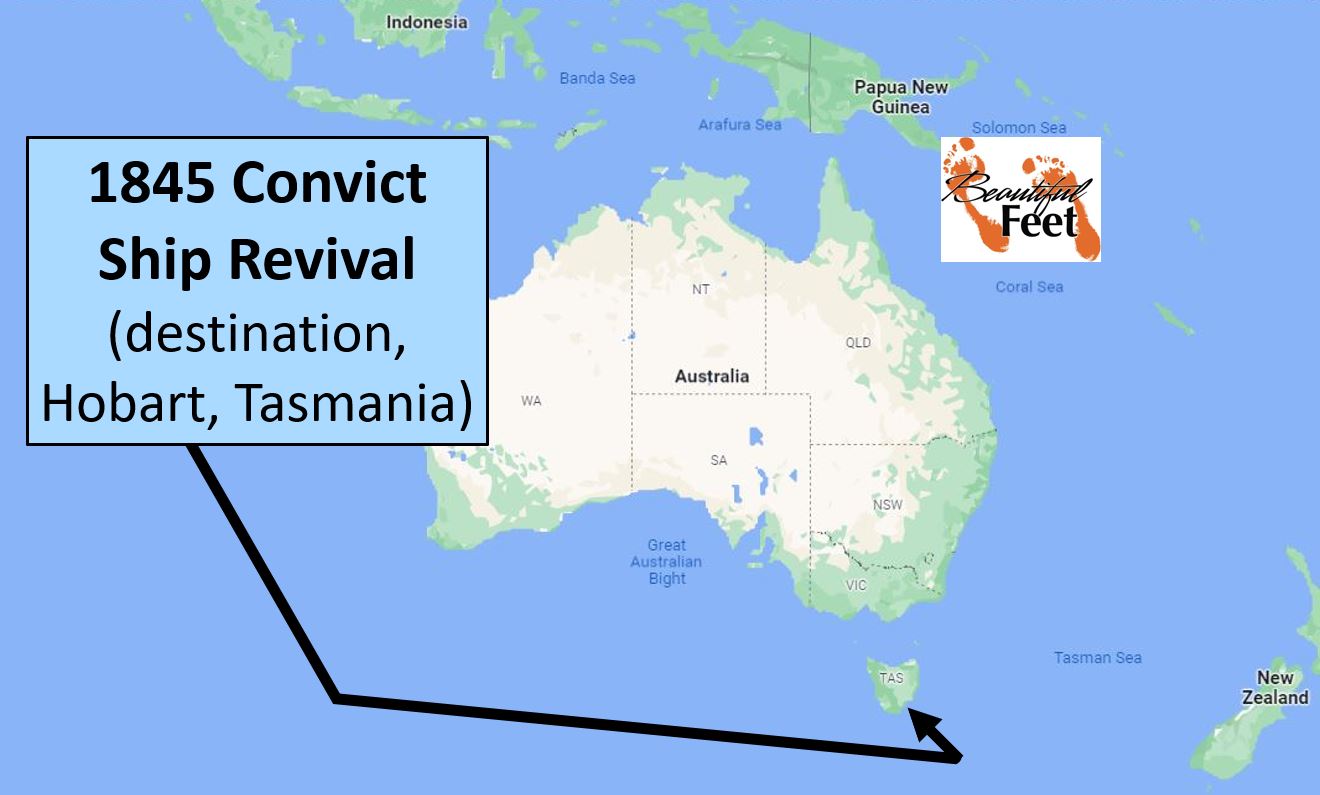
Introduction
Beginning in the early 1600s, till 1868, England exiled tens of thousands of prisoners to penal colonies around the world, including to North American colonies.
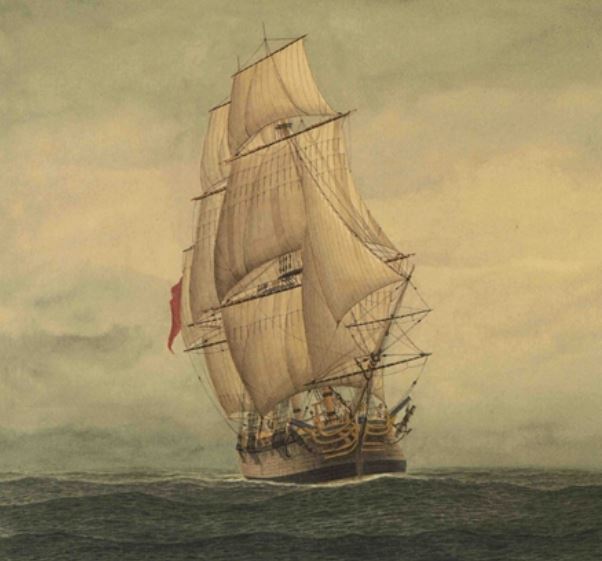
Lady Penrhyn was one of the convict ships
that was part of the First Fleet in 1787
In 1787, 11 ships, known as the First Fleet, took the first European settlers to Australia. Of those 11 ships, 6 of them carried convicts. The last convict ship, the Hougoumont, transported 279 male prisoners, arriving in Fremantle, Australia, on January 10, 1868. That ship brought the total number of convicts exiled to Australian penal colonies to 162,000, using 608 ships.
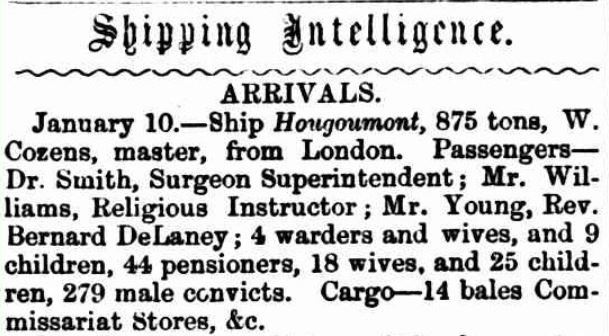
News clipping from the Perth Gazette and West Australian Times, 17 January 1868, announcing the arrival of the last of the convict ships – the Hougoumont in Fremantle, Australia
With the journey from England to Australia usually taking around 3 months, it was not uncommon for prisoners or crew members to die en route from various illnesses. This led to the appointment of medical officers to be part of the ship’s company during the voyage.
Dr. Colin Browning, a medical officer employed by the British on these ships, experienced 8 voyages from England to penal colonies between the years 1831 and 1849.
During Browning’s first voyage, on board the Surry in 1831, he had no training for the peculiar situations he would encounter. After several years of experiences on convict ships, he wrote a book to assist other medical personnel in preparation for similar assignments.
Browning strongly believed that any attempt at discipline in prisons, as well as reform of prisoners, without spiritual instruction, would be futile. Though it wasn’t his assigned job, he assumed the role of chaplain among prisoners and experienced tremendous evangelistic results during his later voyages.
This revival account concerns the voyage of the convict ship Theresa, the information being obtained from a letter written by Browning in Hobart Town Harbour, Tasmania, to a friend of his in England. The letter was dated July 14, 1845. At the time, Tasmania was called Van Diemen’s Land. The name changed in 1856.
Convict Ship Theresa
The people who embarked on the convict ship Theresa for the voyage to Van Diemen’s Land numbered 329. They departed England on March 28, 1845. Of those 329, 220 were convicted prisoners who were being transported to Hobart, Van Diemen’s Land, which was a penal colony.
For many days prior to the embarkation of the prisoners onto the convict ship Theresa in England, Browning had been sick and extremely weak. Though sick, he credits God for giving him the strength to address the prisoners when they first came on board.
In that state of weakness, God spoke through Browning, impressing several of the prisoners, and though unknown at the time, in later conversations with some of the converted convicts, Browning was told that the “first awakening of their soul from a state of spiritual death” began with his address given when they first stepped foot on the C.S. Theresa.
Rapid Sequence of Events
By April 16, not long after their departure from England, 8 prisoners experienced deep conviction of sin and acknowledged their sinfulness. These individuals spoke privately with Browning and they agreed to meet regularly as followers of Jesus for “spiritual edification and comfort.”
One after another was added to the group, as more professed their faith in Christ.
► April 28, there were 14 who had been converted and were meeting with the group.
► May 5, the number increased to 21.
► May 7, the numbers reached 27.
► May 8, one more was converted, bringing the total to 28.
The spiritual atmosphere among all the prisoners was felt and many more began to demonstrate concern for the eternal state of their souls.
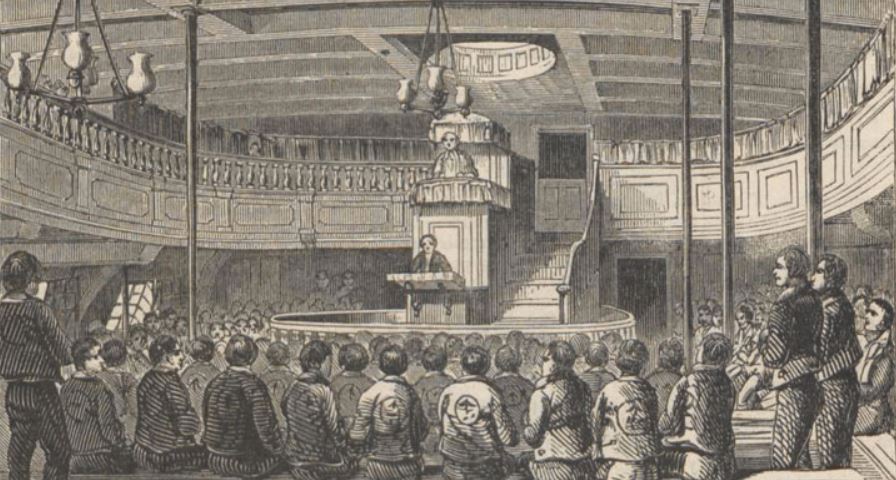
Chapel in a prison ship
Evangelism by New Converts
Every new convert became an evangelist and their influence among the other convicts was very effective. This led to an increasing number of men who wanted to have private conversations with Browning.
Though Browning had other professional responsibilities on the C.S. Theresa, his time was mainly spent tending to discipleship of the new converts, through teaching and prayer.
More Conversions
► By May 13, the number of converts reached 32, with almost every day more being added to their numbers.
► By July 7, the number of converted convicts reached 156.
Converts were not counted by mere confession of their faith; it was by
Proving by the way that they lived that they turned from their sins and turned to God. (Matthew 2:8)
In addition, Browning examined those claiming to be followers of Jesus, with these standards:
► They were able to express their faith in Christ publicly.
► They had surrendered themselves, body, soul, and spirit to God.
► Their language and behavior corresponded to how a follower of Jesus should behave.
► There was consistency in their lifestyles.
Reading Groups (Schools)
Browning indicated that there were “thirty-three schools,” or groups of men, who regularly gathered in classes for literacy training, specifically using Christian literature as the medium of education. So effective were these schools, that when the C.S. Theresa arrived in Hobart, all the prisoners were able to read.
Discipleship
In addition to literacy training, the daily training in godliness involved:
► Morning and evening teaching and worship.
► On Tuesdays, Fridays, and Sundays these gatherings were held three times per day.
The entire voyage was one long journey of discipleship and “spiritual enjoyment.”
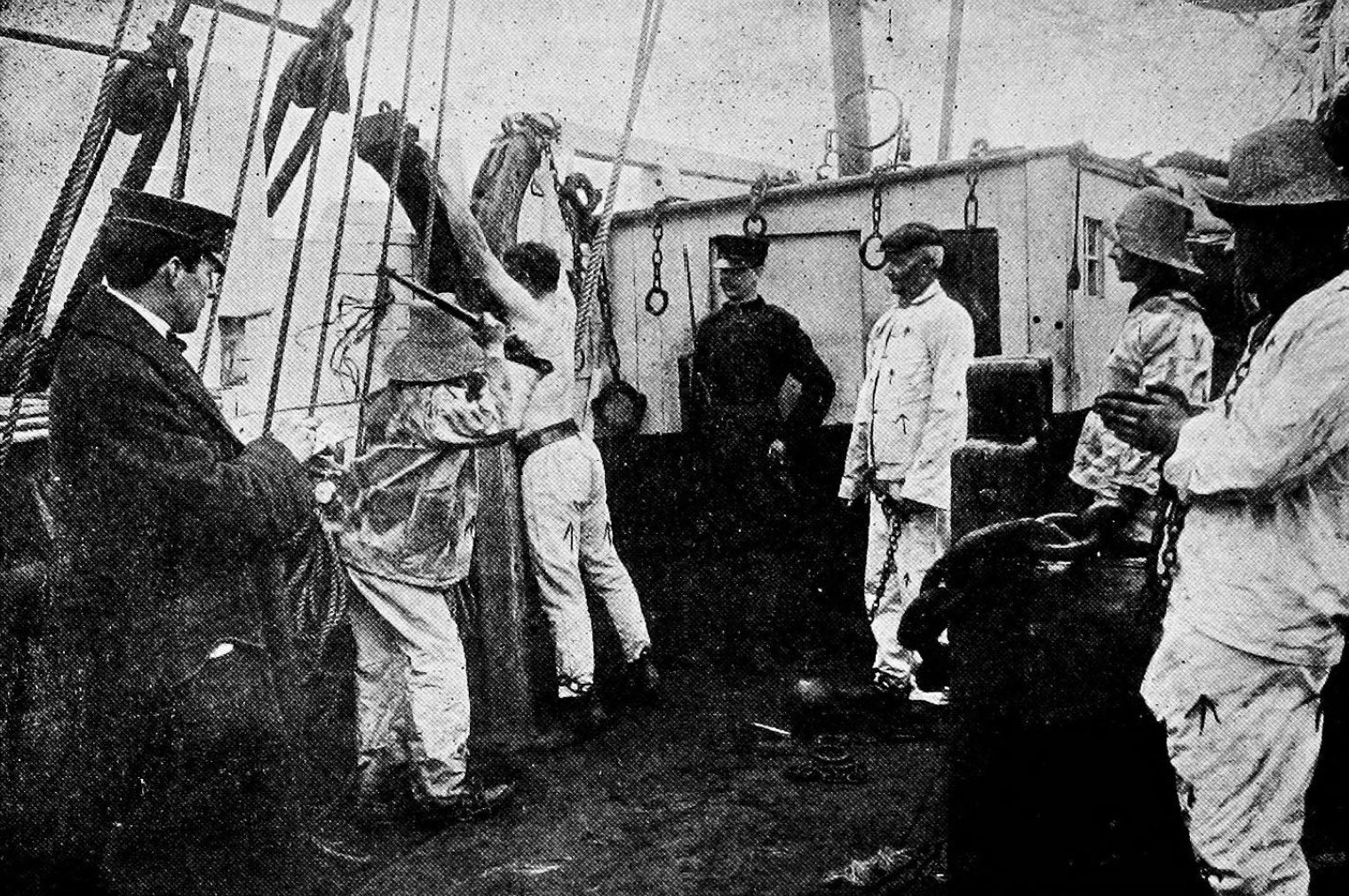
Flogging and other brutal forms of punishment were not needed during this particular voyage on the C.S. Theresa
Demonstration of Orderliness
With the believers living disciplined lives, they were dutiful as to the ship’s rules. Because of their punctuality, and even expressing joy while carrying out their daily duties, the ship’s officers never had to punish any of the prisoners. The 220 sets of irons onboard the Theresa, as well as other brutal instruments used for punishment onboard a convict ship, were never used. No person was ever given any lashes, nor was a single prisoner required to be placed under the care of a guard.
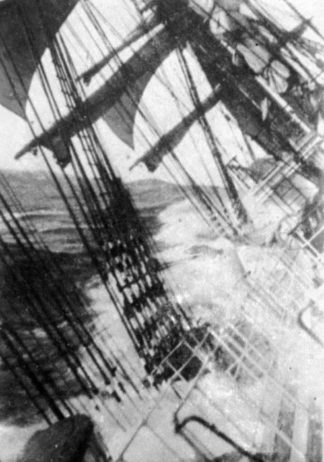
Severe weather
Severe Weather
While experiencing severe weather, with waves breaking over the ship, the men assembled below decks for their daily meetings. The men would sit tight against each other to keep themselves from being thrown about. Browning, while reading the lesson and sermon, had to hold on tight with both hands to be able to brace himself while the ship was tossed and rolled about. Repeatedly, the Christian training was held under such conditions, with “torrents of water pouring down the hatchways.”
Religious Resources Available
Donated by various Bible societies prior to departing England, the ship had a large number of Bibles, Testaments, prayer-books, sermons, books, and tracts. The literature was extremely valuable and well used throughout the trip, though it had been previously thought to be reserved for settlers that were already living in Hobart.
With this quantity of quality reading material, by the end of the voyage the men’s reading skills were examined, and having passed the exam, they were given Bibles and other books as prizes for their diligent work.
Military Detachment
The military detachment on board, along with other crew and passengers, were also granted the privilege of reading the Christian literature throughout the voyage.
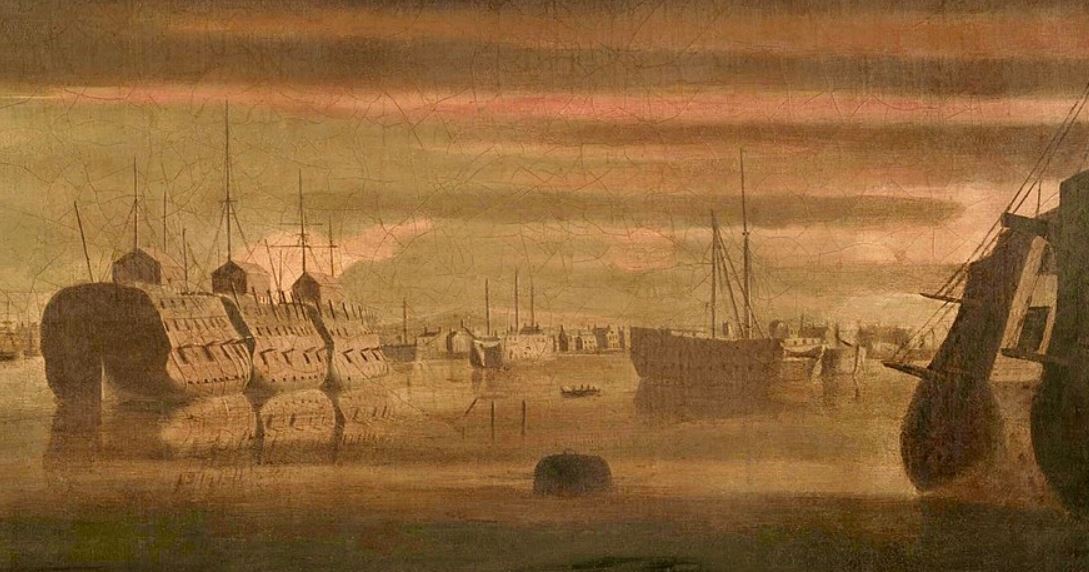
Prison ships on the Thames River, London, England (c. 1814)
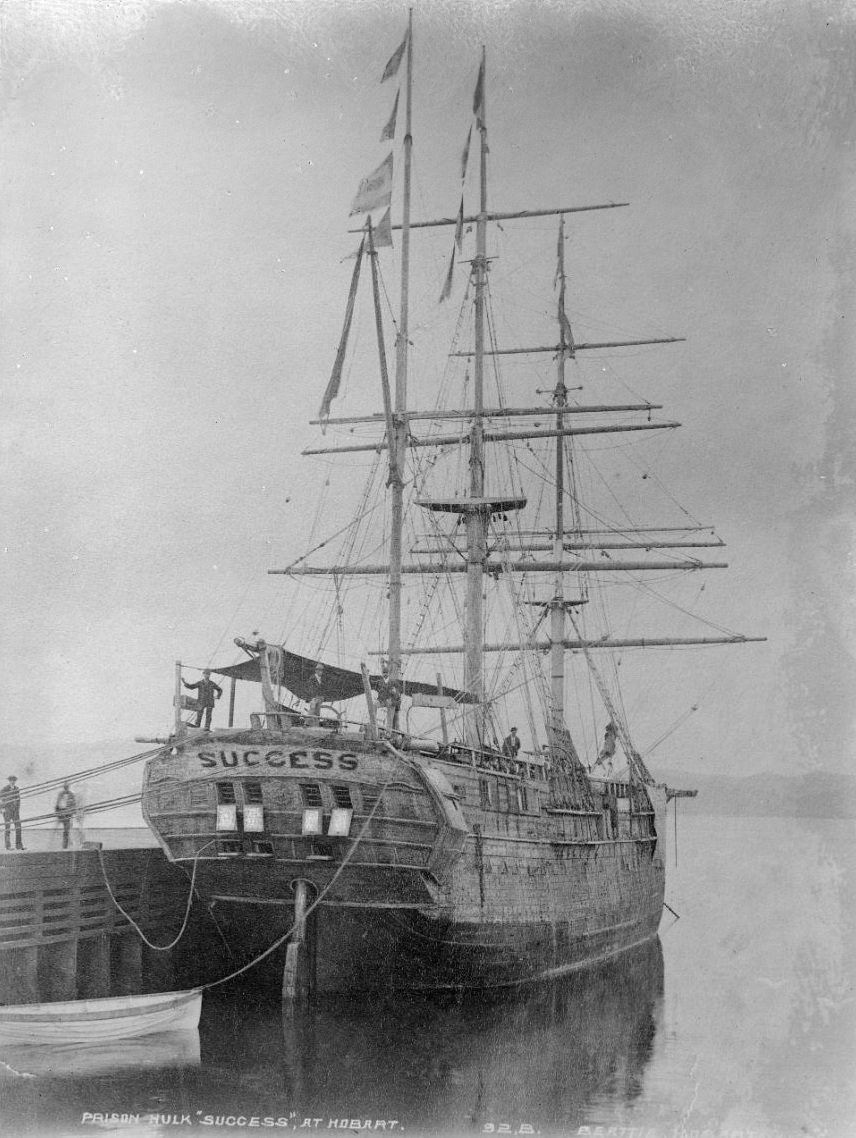
Prison ship (hulk) Success, tied to the pier in Hobart, Tasmania.
Support of and Liberty for Christian Ministry to Be Conducted
Browning expressed his gratitude toward the guards “who never in one instance attempted to interfere” with him as he ministered to the many prisoners.
All Arrived in Good Health
Most voyages like this ended in the death or severe sickness of some of the crew or prisoners. But on the C.S. Theresa, there were 329 that embarked in England, and there were 329 when they landed in Hobart, Tasmania, on July 3, 1845 (a 98-day voyage).

Monument for the 11,500 American Revolutionary soldiers who died in British prison ships. Monument located in Fort Green Park, New York.
Sources
► Convict Ship by Wikipedia
► Convicts and the British Colonies in Australia by Australia.gov.au
► Convicts in Australia by Wikipedia
► Prison Ship Martyrs by Wikipedia
► The Convict Ship; a Narrative of the Results of Scriptural Instruction…on board the “Earl Grey” by Colin Arrott Browning
► The Convict Ship and England’s Exiles by Colin Arrott Browning
► The Famous Australian Convict Ship “Success” by the Royal College of Surgeons of England
► The History of the British Convict Ship “Success” and its Most Notorious Prisoners by the British Museum Government Records and Documents
► The Voice of Our Exiles by Daniel Ritchie
► Theresa Voyages to Australia by Convictrecords.com
Return to List of Revival Stories
Chet & Phyllis Swearingen
(260) 920-8248
romans1015@outlook.com
Beautiful Feet
P.O. Box 915
Auburn, IN 46706

